Musings

Today’s objective: cross the Pyrenees, and whatever else happened. Here’re some views through the windshield…. Driveway gate…

Railroad bridge for Le Petit Train Jaune.
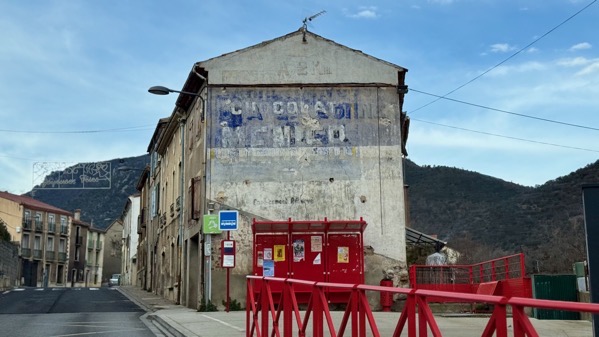
Random flaking sign on building.
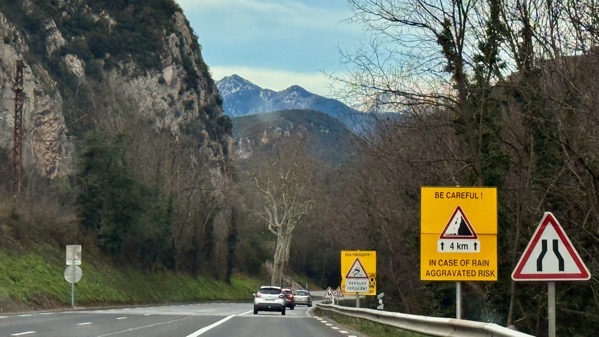
Road safety warnings. We did have a short period of precipitation in the dark hours, a spin-off from the Storm Éowyn system.
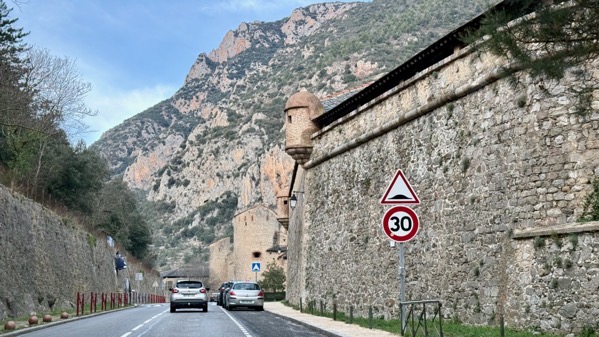
We didn’t know what this was driving by. Turns out its part of a 17th C fortification…to control access to the valley we’re headed toward.
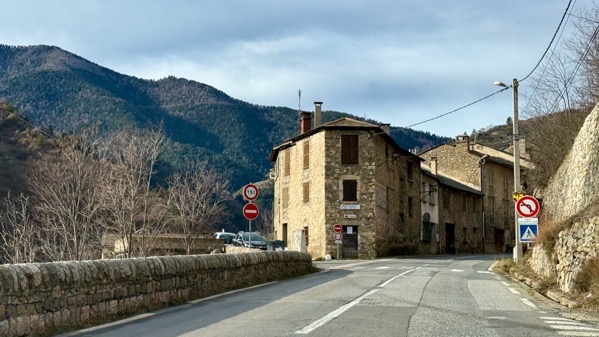
Today’s roads don’t fit well into the spaces between buildings….
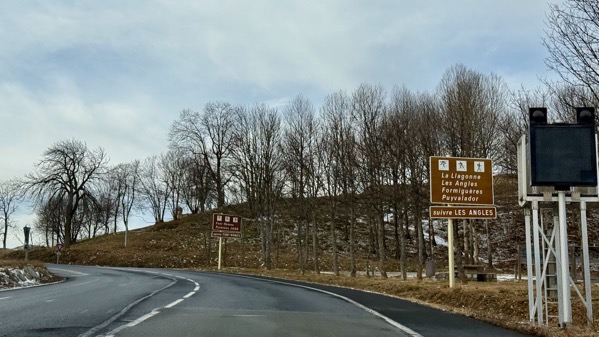
At the pass, we did see bits of snow on the ground, but just (thankfully) moisture on the road. Some cars that passed us, presumably from ski areas, wore 2 or so inches of new snow.

We were very pleased to descend into the Cerdanya valley, with its wide fields and pastures. And horses, many horses, all winter-shaggy. Most were heavy-bodied, the shape I associate with working horses. I thought I got a decent shot of grazing horses, but when I zoomed in, they were mules. Harrumph.
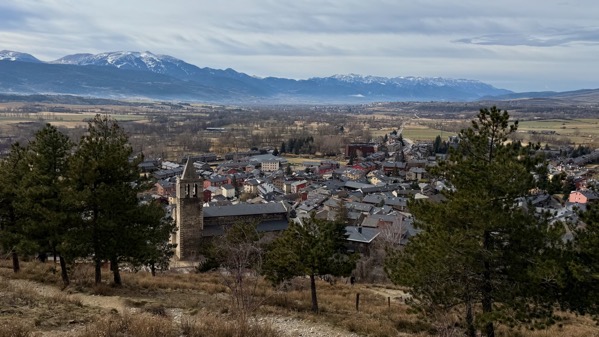
I was going to title this post something about border crossings. This was our first—out of France and into a small bit of Spain that’s entirely in France, called Llívia. It’s dominated by the castle hill, which we climbed up a ways, but only perhaps ⅓ of the way…which was plenty to get this good view of this part of the Cerdanya, and the church bell tower below us.
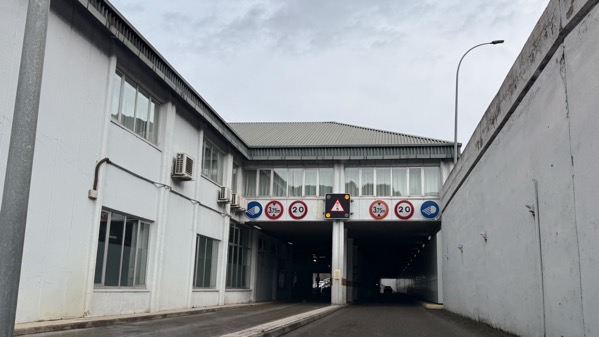
Then we crossed back into France, then back into Spain, and carried on until…I’m calling this Aduana Uno, that is, Customs One…for leaving Spain…
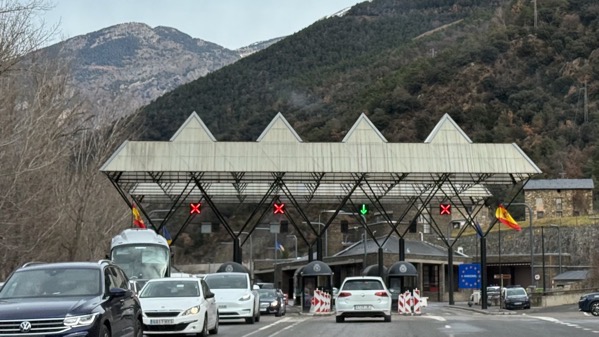
…and Aduana Dos, for entering Andorra. You want to read about a strange international situation, look up Andorra. The first thing we noticed was all the traffic exiting into Spain and backed up perhaps 2 km. Yikes. These motorists, we guessed, were headed home after weekending in Andorra, skiing perhaps.

We found Andorra gritty and traffic-filled, the main valley overstuffed with multi-story apartment buildings, and rather yucky. We ducked into a Carrefour and bought some lunch makin’s, then headed back to the traffic jam, and ate while nudging along. Summary: we went to Andorra for lunch.
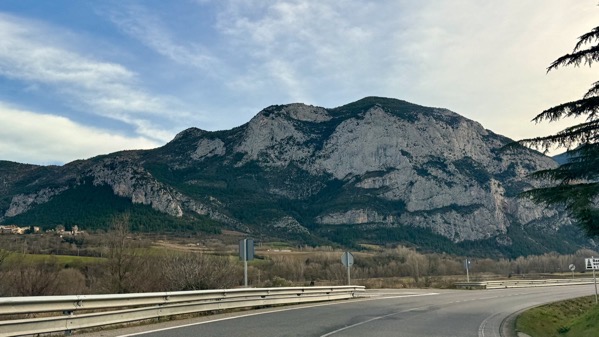
Back in Spain, southbound took us out of the mountain rockiness eventually.
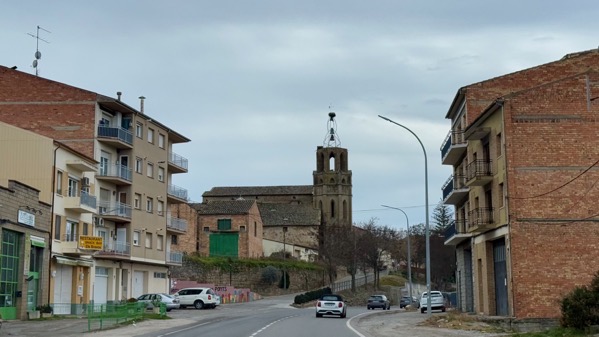
From afar, we both thought this looked like a mushroom spire. Turns out it was a stork nest providing the flare.
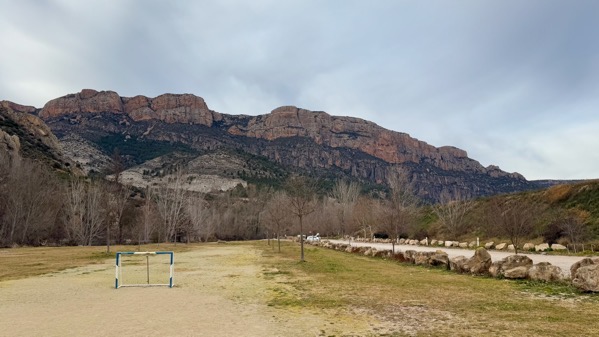
This rock face is just at the edge of the mountains.
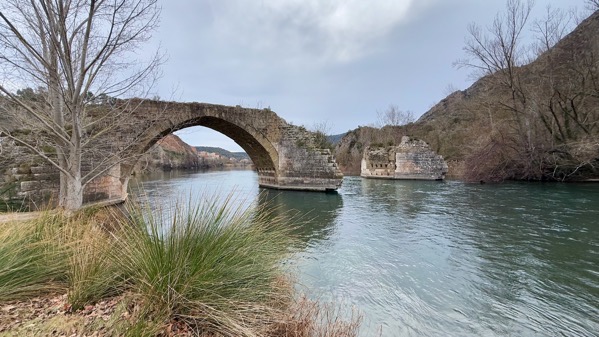
And, if you face the opposite direction, you see the ruins of a Medieval bridge. The exposed “guts” offer insight into construction methods and engineering strategies.
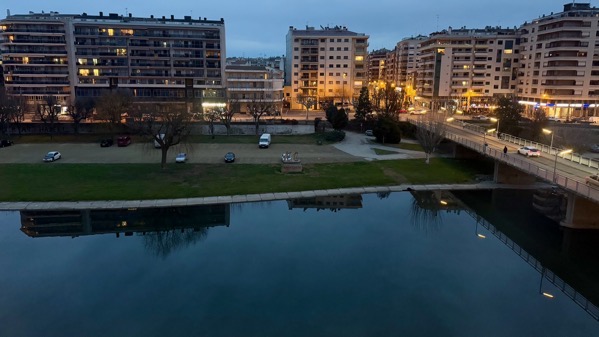
The view from tonight’s room…sluggish river, and far more space riverside than we saw in Andorra….
Posted at 2:11 PM |
Comments Off on Ups and downs

Orientation first. Left satellite view; this is the southern Gulf of Roses. On the right is Greek Emporion (amplified right), Roman Empúries (left lower, with “R”). North is “up.” The scale is huge. IMHO, these were cities, not ho-hum towns.
First, however, indigenous people lived in the area. Although later occupations have covered them up, that round knob at the top, an island with an elevated summit, was an Iron Age settlement, and inland were others.
Greeks were trading here before establishing a settlement. They first built on the knob to trade, and called it Palaiaopolis; the harbor was to the south of the island. Celt-Iberian pottery was changing from this presence by the 7th C BC. In the 6th C BC, Greeks moved to a new area to the south of the harbor; they called it Neapolis. This community was given repeated updates and modifications. By the 4th C BC, this was a city with a Greek layout—including an acropolis on the highest spot, and markets and an agora, the central public space. In the 2nd C BC, they beefed up the walls, expanded the sanctuary areas, and added new port structures.
You can research the warfare/conflict that gave the Romans the upper hand by the 1st C BC. On the left, the rectangular “R” area is the Roman city. Ultimately, the grid of streets was 6 or 7 wide, and 15 north-south. The amphitheater is just outside the wall south of the southwest corner.
Now, some photos of the Greek city.

Sarapieion temple, southeast corner of Emporion.

Peristyle domestic complex, the largest of Emporion, close to the bay and immediately south of the agora.

View east-southeast, with stoa along the left (colonaded public structure), and agora in mid-ground.

View south from houses north of the agora, down the main north-south street of the southern part of the city.

Port—now green grass and trees; view north.

Acropolis. View is to the north. I found it amazingly small, perhaps 5×5 m.

Somehow this is a water filtration system, up near the acropolis. No info was offered about how it worked.

This gives an indication of the density of houses (almost all of these rooms were dwellings/dwelling complexes), looking toward the acropolis from the main north-south street, view to west.

They’ve put a museum in the church, between the two cities. This statue was found in 1909 in the temple area in the southeast of the city. The upper part was in a cistern, and the rest in the temple where it stood originally, and a replica stands now.

From the museum, we ascended the hill and entered the Roman city. It is vast. This view is from the northeastern edge of the excavated area, looking south. I’m pretty sure all of what you can see, except perhaps the tallest trees, lies within the city (maybe not the walls, but the city).

Here’s looking the length of the forum from the north. I’m standing on the front of a large temple honoring Jupiter, Juno, and Minerva. Colonaded structures lined the other three sides, and more temples flanked this one on the north side. Again, all but perhaps the tallest trees: in the city.

Looking north through the door/gate in the south wall, up the main street, the length of the city. Ish. That partial structure on the left is a reconstruction of the southwest corner of the forum.

Outside the wall, but snugged up against it is the amphitheater. The vertical element is gone, and I find it difficult to visualize its scale.
Well, that’s enough. Remember, too, that, big as this Roman city was, the whole population of the immediate area was not living here. Indeed, there were other communities and villas scattered about. ’Nuff said.
Posted at 12:54 PM |
2 Comments »
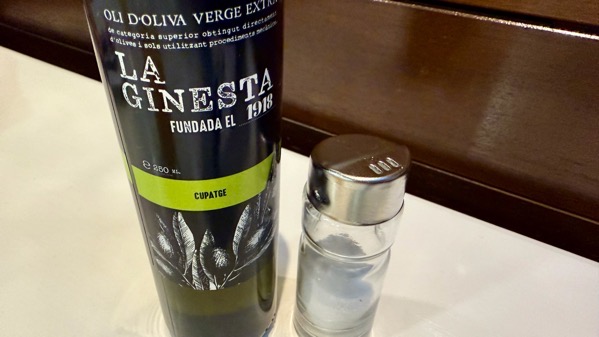
On the table as we sat down to breakfast: salt and olive oil. This is (drip-line irrigated) olive orchard country, and there are plenty of new terraces being built and planted. The development seems to be by multi-national agribusinesses, not small-holders.
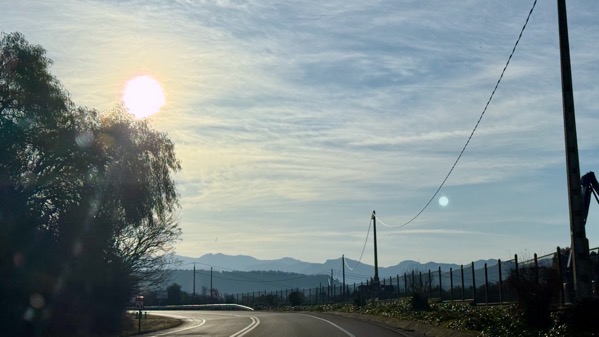
It’s 10am, and the sun’s too high for a sunshine slow-down.
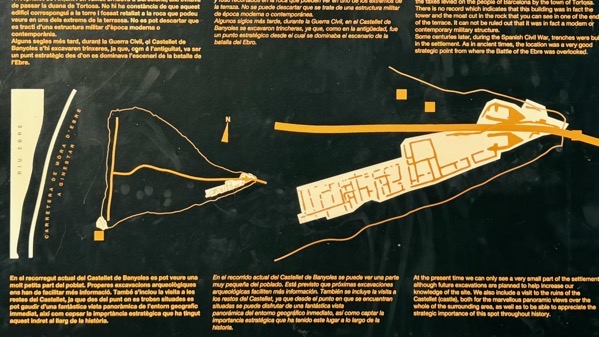
The map on the left shows the Ebro River, flowing north-to-south on the far left. The site, called Castellet de Banyoles (Tivissa), is triangular, with the only foot access from the right as there are cliffs elsewhere. The right map is an enlargement of the fortified entrance there (see next photo).
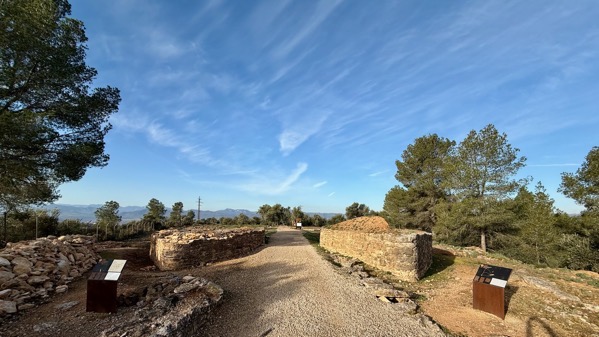
Those two points facing us are the rebuilt bases of two large pentagonal towers that totally controlled access to this ~4.4 ha city.
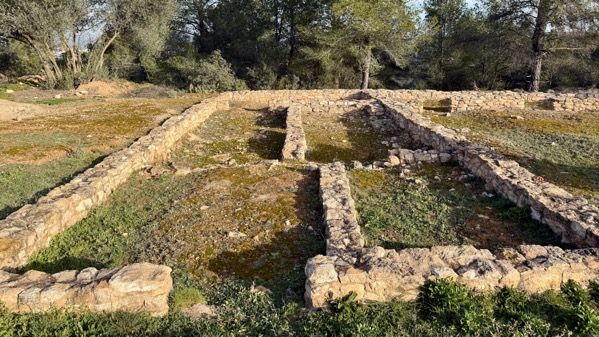
Here’s one residential compound, two rooms wide and three deep, with the doorway in the front. Often with such a layout, the innermost room was where people kept their valuables, food, etc., so that visitors could be permitted only in the front/reception room, and remain ignorant of the family’s wealth.
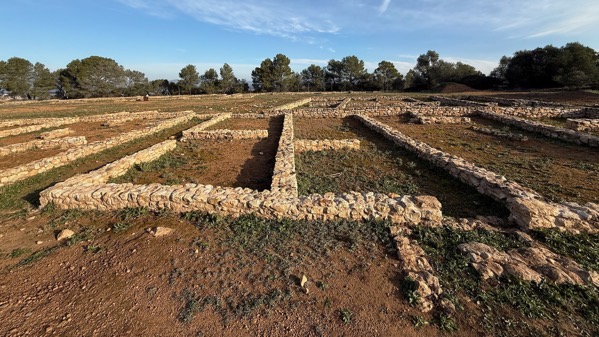
Here’s another compound, two very long rooms deep, and two wide.
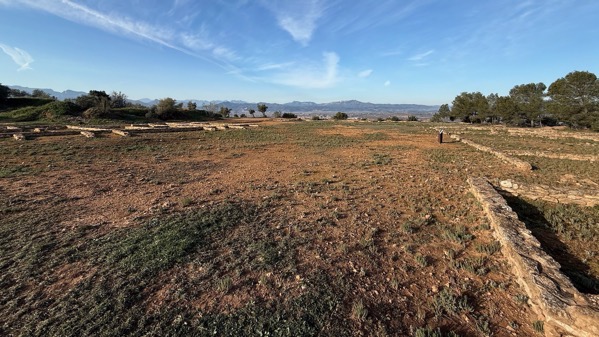
This very wide open area functioned as a broad street between dwellings left and right. Despite all this construction (I haven’t mentioned the effective sewage system for the whole city), this settlement was built in the 4th C BC, and was wealthy, probably producing Iberian drachmae coins, imitating types from the Greek city of Emporion, far northeast of here on the Mediterranean. Excavations recovered luxury goods of gold and silver (including earrings, bowls, plates and bracelets), pieces of lead bearing Iberian script, and significant traces of metallurgical activity. The Romans burned/destroyed the settlement about 200 BC, probably in connection with indigenous revolts, although there is some evidence of reoccupation. Recent fieldwork has found Roman-period items east of the fortifications, which point to a Roman camp having been established there.
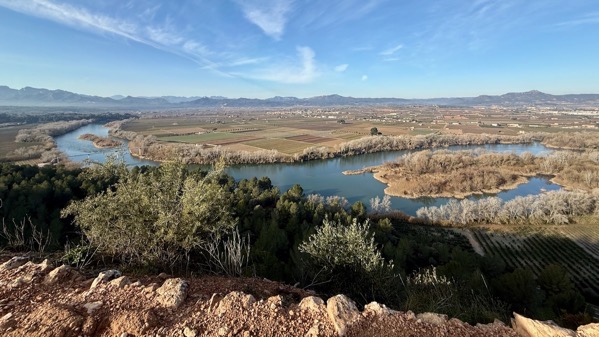
Over the wall to the west, a bend of the Ebro was below, and the arable land that this city controlled, too.
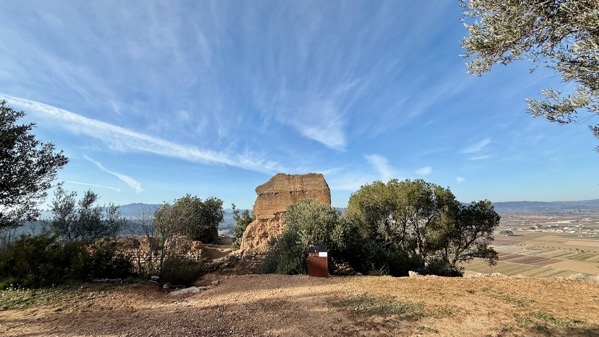
Here’s the southwest lookout tower base, visible in the map.
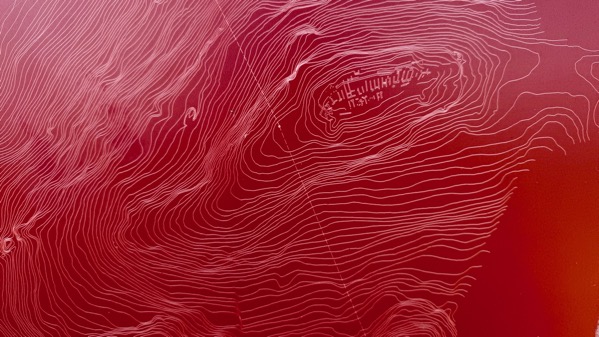
Our second site today was totally different. It’s on a tiny, narrow landform, and overlooks a small tributary of the Ebro, so it is not in the main valley. The settlement was far earlier than Castellet. It’s called Puig Roig (red hill in Catalan—from the rock substrate, not the sign!), and dates to the the ninth and eighth centuries BC.
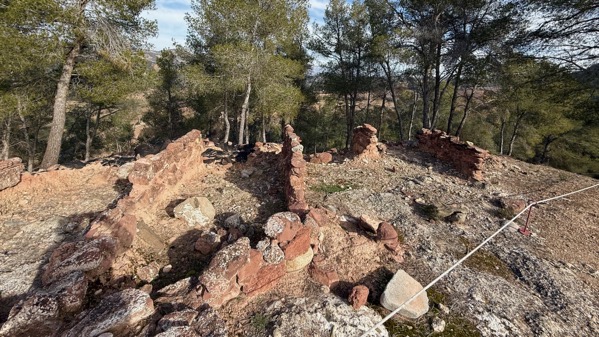
These walls are not even 2m apart; these were much smaller rooms.
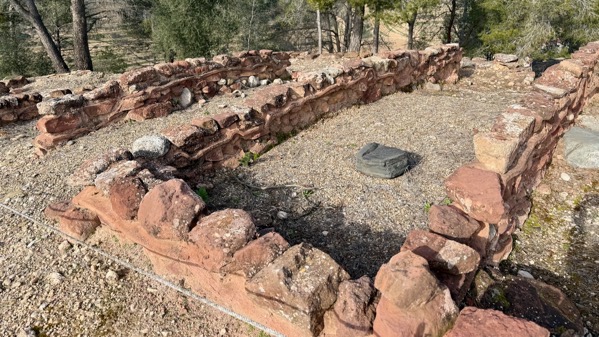
These are the largest rooms I saw….
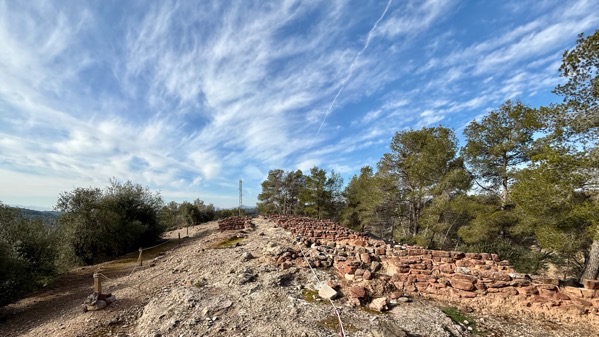
Here’s the central street, not quite two meters wide. During occupation, I’m sure it was more level than at present.

Generic mountain drive view, 12:30 pm.
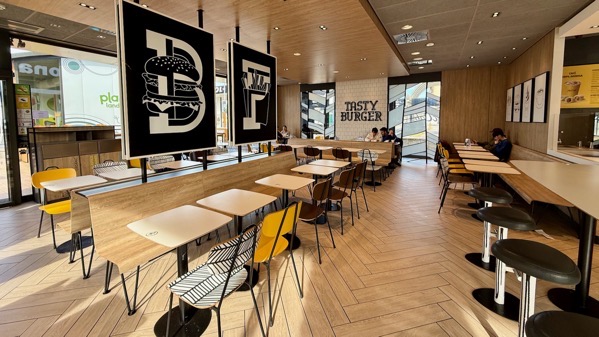
Look what JCB found! Don’t recognize this “Tasty Burger” place? It’s a Mickey’s! [Part of the Playland sign is visible, left.]
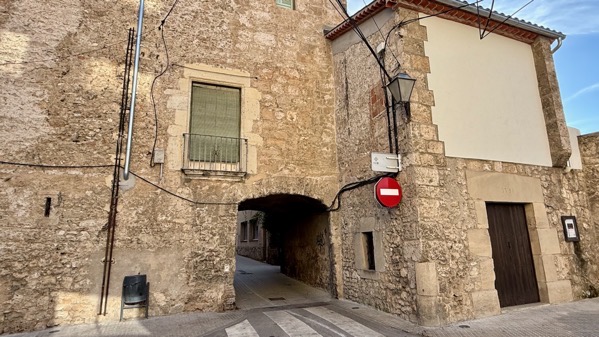
We checked into our hotel and made a paseo (walk). Here’s a perimeter entry, now only one-way for vehicles. [And rightly so!]
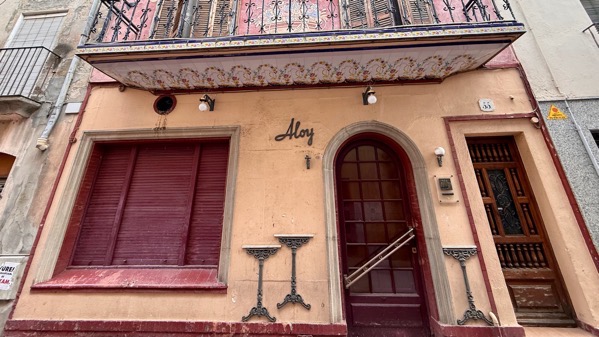
This town is called Capellades, and is famous for making paper of cotton/linen rags plus hemp, including for cigarettes and currency. Look at the detail on the bottom of the balcony floor! We stopped here because of Abric Romaní, a rockshelter in the Quaternary travertine cliff formation (called Cinglera del Capello) that forms the east edge of the town. Excavations from the multi-meter deep deposits recovered important information on Neanderthal lifeways in the area, with dates to the Late Middle Paleolithic, and the oldest layers dating to ~56,000 yrs ago. Only the top layer (Layer A) dates to the Upper Paleolithic and has Aurignacian artifacts indicating human use. Open hours are scanty, so we’ll look at the cliff setting and move on.
Posted at 12:05 PM |
Comments Off on Iron Age towns, more
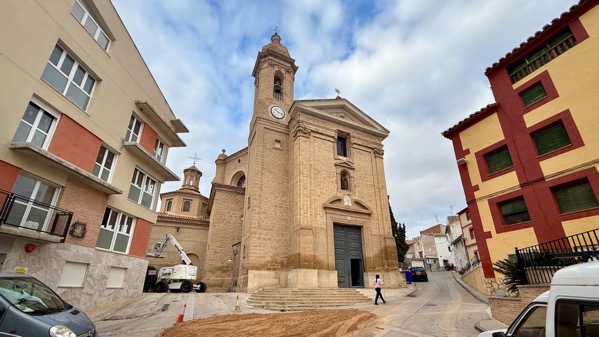
We took the long way back to our room after breakfast (the short way was maybe a dozen doors away), and the maze of streets brought us by the church, and the door was open!

So we looked in. Two priests and fifteen parishioners. What a surprise to see that oval ceiling and pantheon-like dome. A bit of digging (you know where), and I see that the building, Iglesia de San Pedro Mártir de Urrea de Gaén, was designed by Agustín Sanz (also the contractor for construction), with the building completed in 1782. The unusual layout was allowed by the church’s patron, 9th Duke of Híjar, Pedro de Alcántara de Silva Fernández de Híjar. A very progressive design.

We drove quite a ways, trying to absorb a bit about the always changing landscape. Here’s a lovely valley.
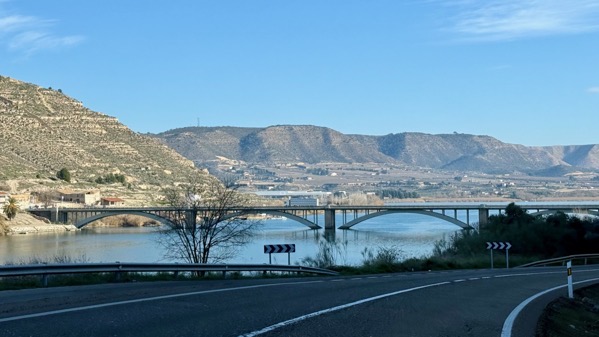
We reached our first crossing of the Ebro River, the major river of northeastern Spain. It’s south of the Pyrenees (duh), and flows east-southeast with a large, roughly triangular basin that I think was a breadbasket in Roman times. It eventually turns south and cuts through some low mountains, before reaching the Mediterranean at Tarragona. We will spend perhaps almost half of this trip in the Ebro basin. [Map on WikiPee here.] The area along the river is called the Ribera today. Shortly after crossing this bridge, we entered Catalonia, where we’ll stay for the next eight-ish days.
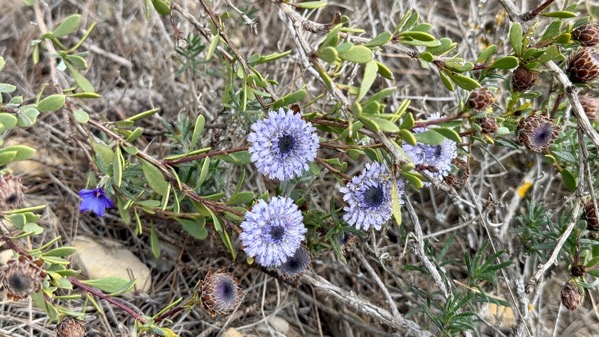
On our hill-climb to the first yacimiento ([archaeological] site) of the day, called in the literature Sebes, I spotted these flowers, mostly old dried out, but not this specimen. The one to the left is different. I don’t recognize either.
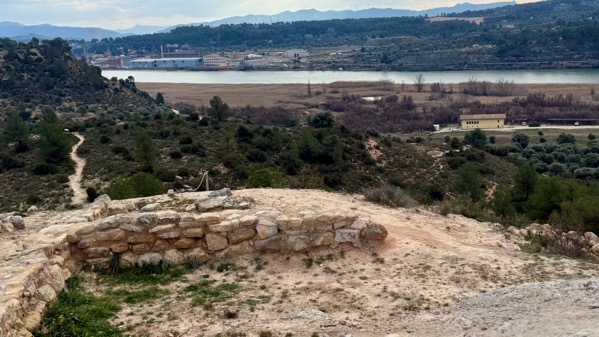
The heydey of Sebes was the Early Iron Age (7th C BC, and thus pre-Roman), when I think the best place in town was up here, but structures were on many terraces below the hilltop. Here’s the view of the Ebro from the high-point.
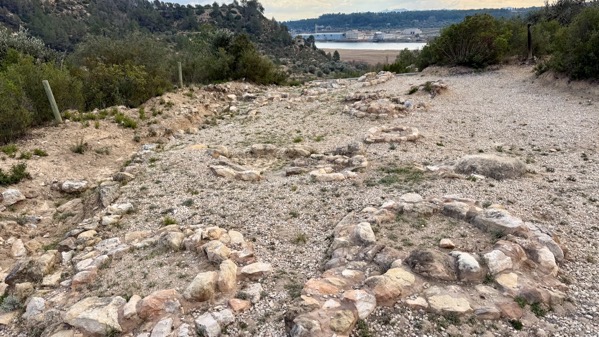
On a lower ridge-nose, the Sebes people put their dead beneath these careful rings of stones. Long before the Romans, people in Iberia put their dead outside their communities, but close by.
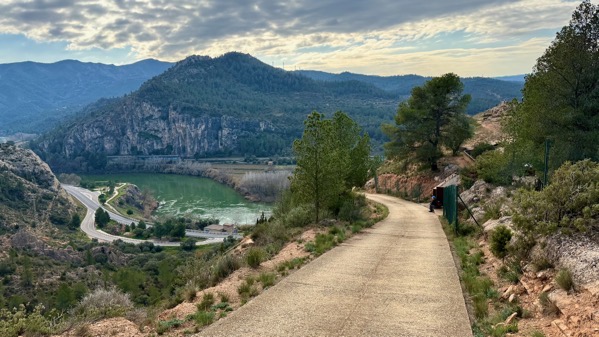
That ridge-nose off to the right and barely visible has the ruins of a later Iron Age settlement, high (as you can see) above the Ebro. The name for it today is Sant Miquel de Vinebre, so not an indigenous term that the Romans recorded before they ousted the inhabitants in 44 BC. Further parsing the photo, you can see the geological bottleneck to the left, which allowed this site to control passage up the Ribera, and the arable lands to the right or west-northwest and out of the photo.
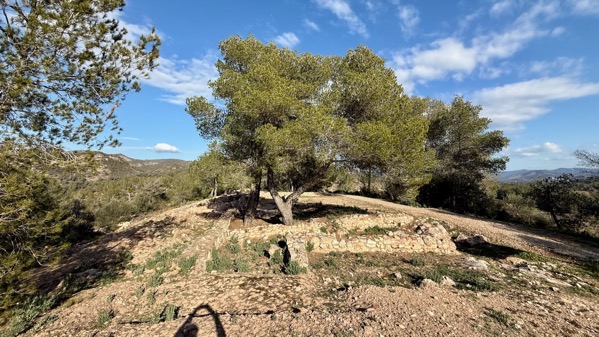
This site is typically referred to as El Molar for the adjacent town. John says the community’s business is dentistry, but the WikiPee indicates it’s agriculture (olive and almond orchards, plus some vineyards). This site dates to the Late Bronze Age/Early Iron Age (so earlier than the two above), and is along a narrow N-S ridge. Most of the excavation was a century ago, so we have far less data than if had been opened up in the last several decades. However, excavators did save some funerary artifacts of copper and lead. Interestingly, this site is in a mining area that produced the lead, but not the copper, although copper is known from the area. Instead, the copper was from southeast Spain, mostly from the Linares mines of Jaén, and, to a lesser degree, from mines in the Almería province. So I read.

We reached Catalonia, an autonomous community (Spain has 17), not a province. Here’s another bridge across…the Ebre, Catalan for Ebro. Our second Catalan word befits language learning in a Catholic region, and is creu, meaning cross. Poking around the internet just now, I learned that in Catalan, the name is Catalunya. Now up to three words!

Note the three balconies of laundry (I gotta include some cultural anthropology)—and one without—perhaps preparing for the weekend?
Posted at 2:26 PM |
Comments Off on On to Catalunya
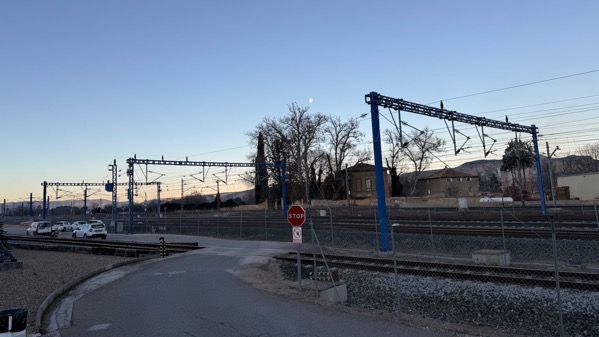
We got on the road before sunup, having quite an adventure trying to get the gas pump to accept our credit cards–no problems yet anywhere else. JCB finally used cash…and we zoomed off….
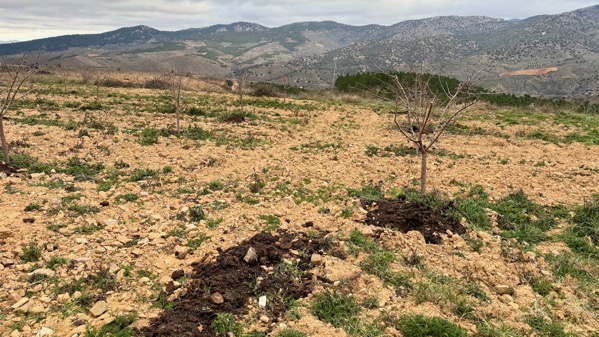
First stop was a ghost town amidst active agriculture high on a slope above the Río Grío, a tributary of the Jalón, which flows by Calatayud.
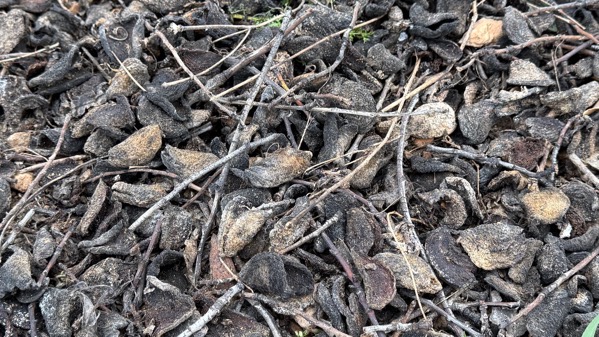
Almond parts: seed/nut, shell, then these: hulls…dessicating and rotting roadside next to an almond orchard.

We walked into the Castillo de Langa del Castillo, and found this central tower still standing; a sign indicated the excavated area in the foreground was a church.
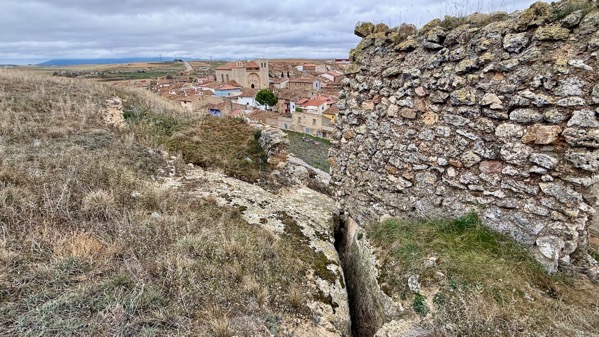
The Castillo fortification has steep walls and only one entrance. Portions of five wall-towers remain. Notes indicate this was a large enclosure for the time. Note how sections of the fort are starting to hive off. Conservation is never-ending.

From one “corner” of the castillo, we could see the piscina municipal below. We’ve seen swimming pools in quite small towns, like this…suggesting there was a provincial or federal program supporting their construction.
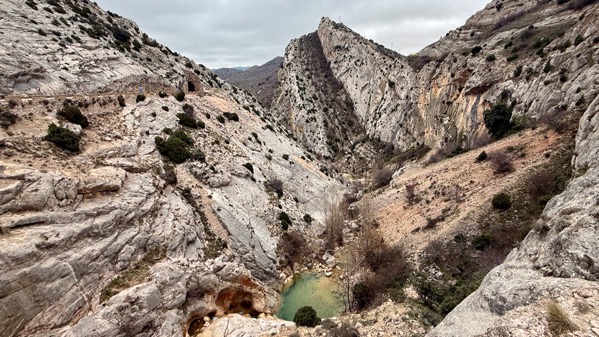
Somewhat later, we zig-zagged through some complex geology/geomorphology along the Río Aguasvivas near Segura de los Baños.
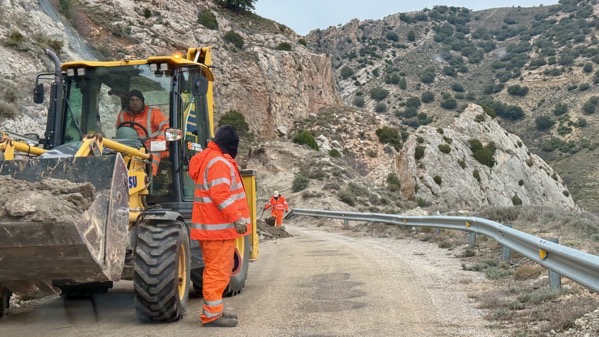
We also encountered a road crew cleaning up after a rock slide. Yes, the car fit between the pile and the guardrail.
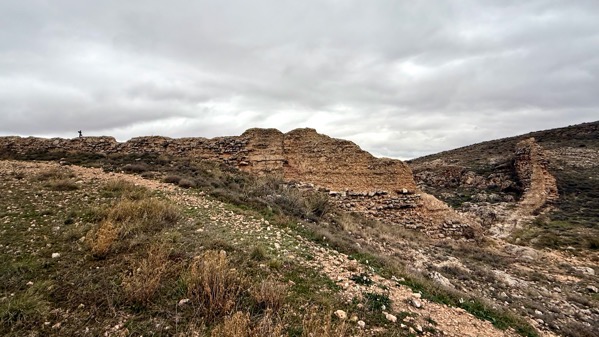
Here’s a look at the upstream side of a Roman dam south of Muniesa. See the curve helping the dam be strong against the weight of the water?
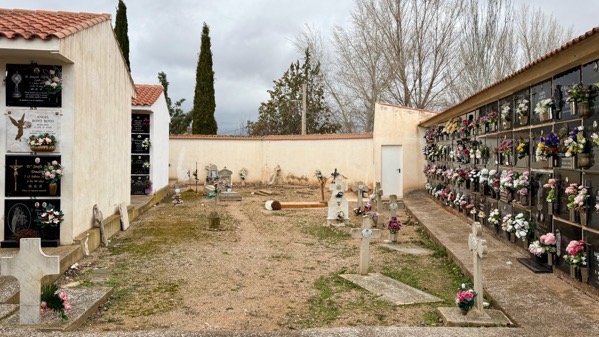
Later, we went toward Muniesa proper, and checked out the cemetery on the edge of town, established in 1903. Most people are planted in a many-rowed columbarium, and I was surprised how many continue to be deposited here. Many plaques note that they were placed by relatives, listed not by name but by relationship: sister, nephews/nieces, cousins. Interesting.

In town, we walked around Iglesia de la Asunción de Nuestra Señora. Doors were locked (we’ve yet to find an open church…although we haven’t been persistent, either.) Note their lovely Mudéjar tower.
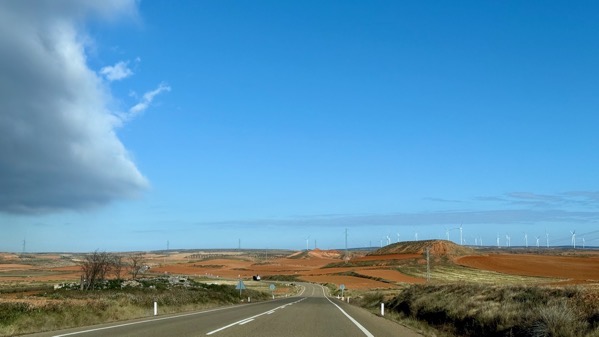
We were so glad to leave the gloominess behind, as it turned out, at the same time as we reached open terrain and commercial agriculture.

Our next stop was a Roman villa in another flat agricultural area, on a low hill. Obv, it’s well-excavated, but not open today (s’okay). The dwelling has a porticoed peristyle layout, with under-floor heating (a hypocaust system). An attached building has two mills and five beam presses, for olive oil. The tanks that received the oil have an estimated combined capacity of >17,845 liters. That suggests the villa controlled a large field area, although their mills/presses could have processed the olives of neighbors, too.
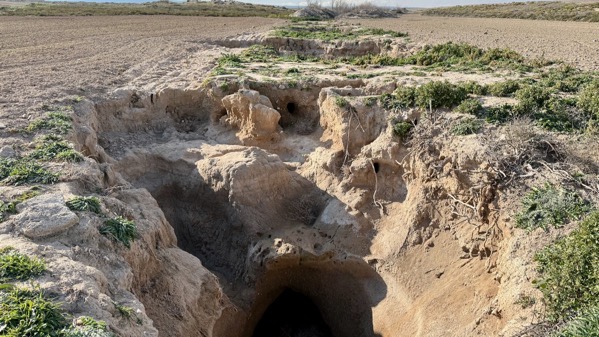
Here’re the remains of a qanat/qanāt, which is an underground Arab (supra-Mediterranean) tunnel system for moving water in arid places. They dig gently sloping tunnels for the water to flow through, with periodic vertical shafts. This is an eroded vertical, with the horizontal visible at the bottom…holding water! I was pretty excited to see this, having read about qanat systems for years.

Near the qanat, we have the best room in the house! Dinner begins at 8:15, and breakfast at 9:30. We’re still adjusting to these mealtimes, which in the evening give me an opportunity to create my posts before we eat. And here you go, you seven gentle readers!
Posted at 1:26 PM |
Comments Off on Water management, more
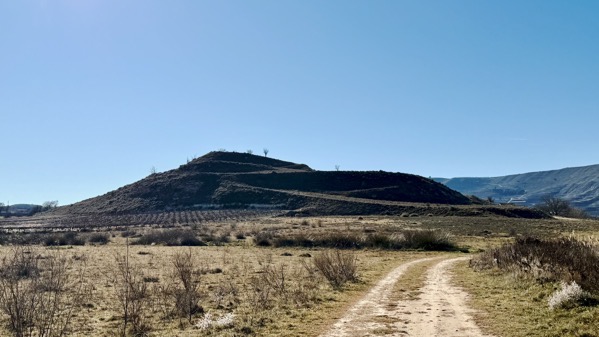
Today’s first stop was a Celt-Iberian settlement, apparently called Sekaiza, on this hill, named Poyo de Mara. We know the name of the fortification from coins the Romans allowed the city to mint—and pay taxes with. I hypothesize that it controlled passage through this valley and especially…
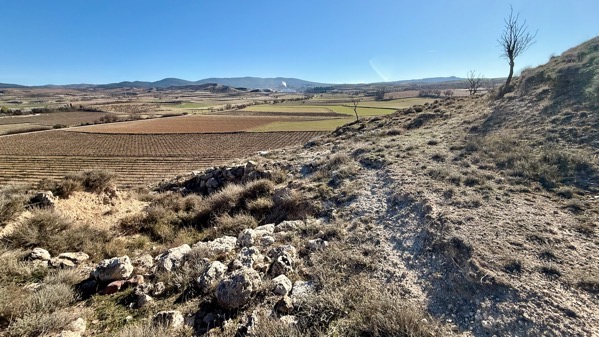
…broad farmlands to the east and south. Here’re the remains of houses/structures on northeast shoulder of a major terrace about half-way up/down the side slope of the landform. View to SSE.
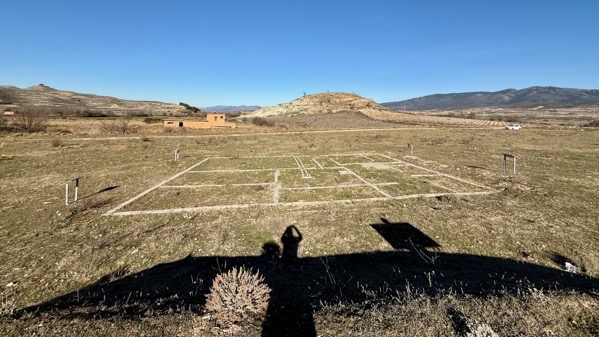
The Romans “destroyed” (conquered?) the settlement, and established their own settlement south of the hill, called Segeda. View north (see the hill?).
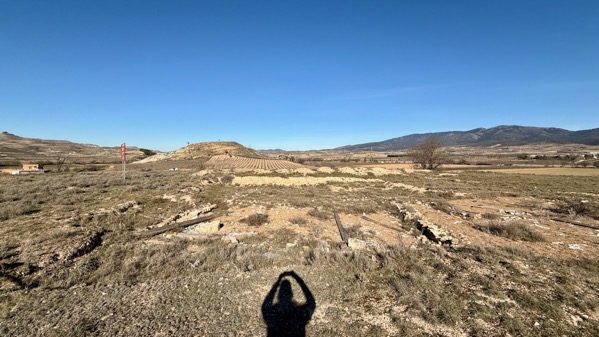
Here’re more foundations even further south. This was a big place, yet only occupied less than 200 years, I think.
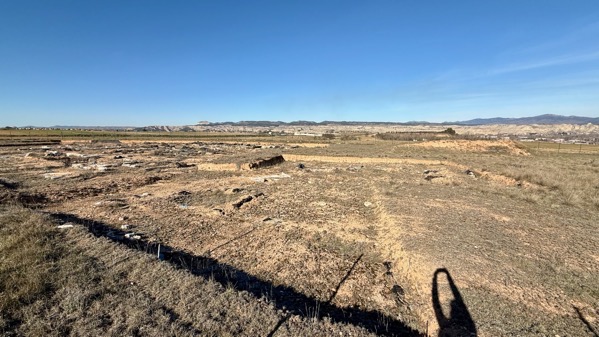
South of Calatayud on a broad hilltop was another Celt-Iberian-then-Roman settlement, today called Valdeherrera. It was contemporaneous with Sekaiza and similarly suffered Roman degradation later, as well as becoming a Roman settlement. I think the plow zone was removed with mechanical equipment, then hand excavations began. This was a residential and artisanal area of a much larger settlement. Valdeherrera and Segeda are about 8 miles apart, as the crow flies.
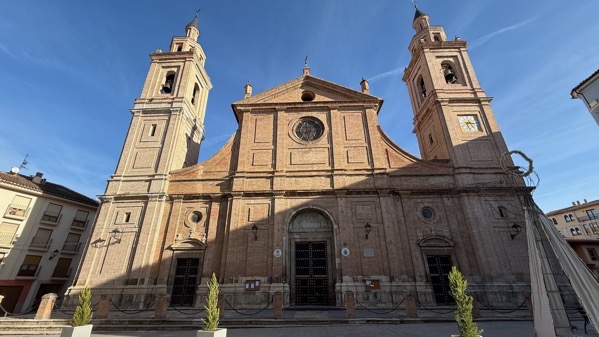
Mid-afternoon, we created our own walking tour of Calatayud. Here’s the main (WNW) façade of the Basílica-Colegiata del Santo Sepulcro.
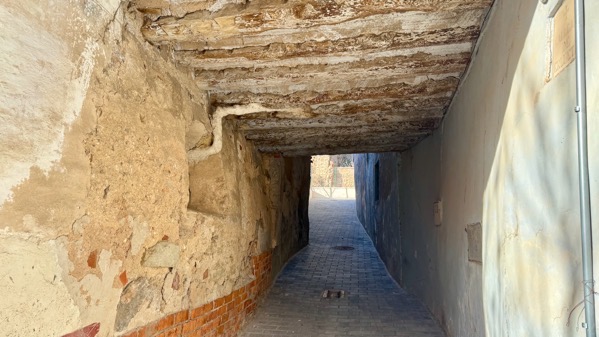
Low side passage with wooden beams supporting the rooms above.
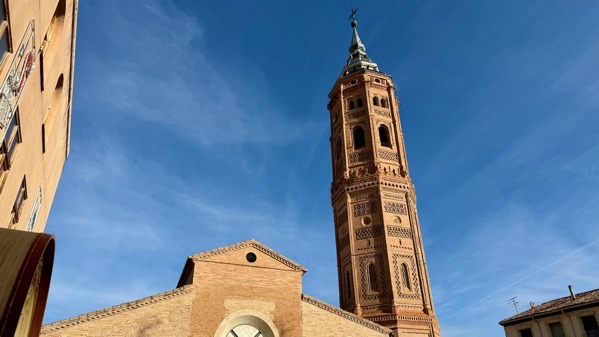
The late-day sun made the parochial church of San Andrés, with its famous octagonal Gothic-Mudéjar tower, glow. Mudéjar refers to Christian architecture design and decorative detail modeled on Arabic styles used during Al-Andalus times, when Muslims controlled much of Iberia.
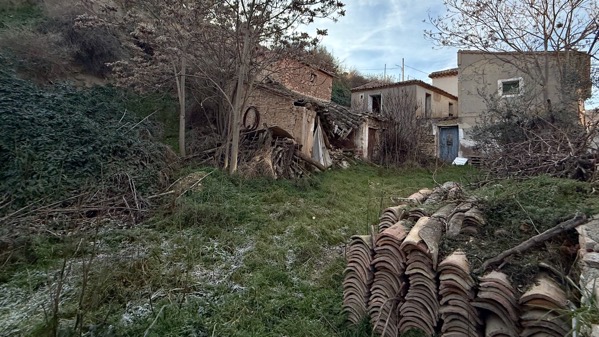
Abandoned compound.
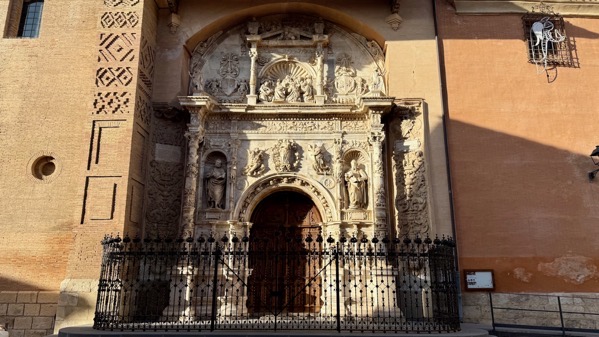
South door of Colegiata de Santa María la Mayor, built, I think, in the 14th C, rebuilt in the 15th C.
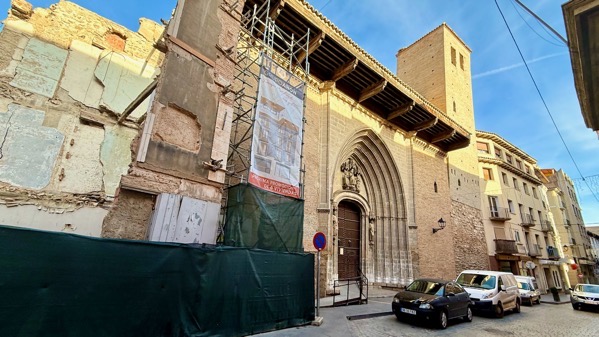
West door of Church of San Pedro de los Francos, with its famous leaning tower.

Tiny Plaza Goya, view to west.
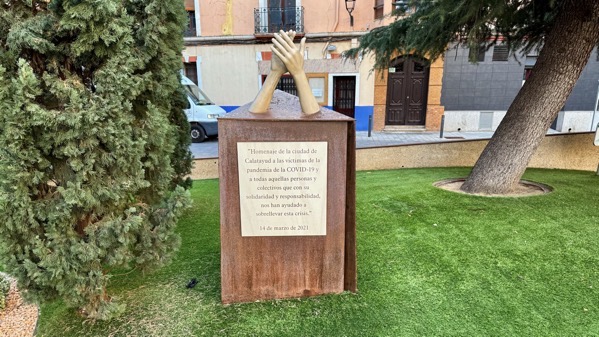
Monument set in astroturf honoring Covid victims and everyone for their solidarity, in Plaza Joaquín Costa. I couldn’t find out one thing about Sr. Joaquín Costa in a quick web search. Shrug.
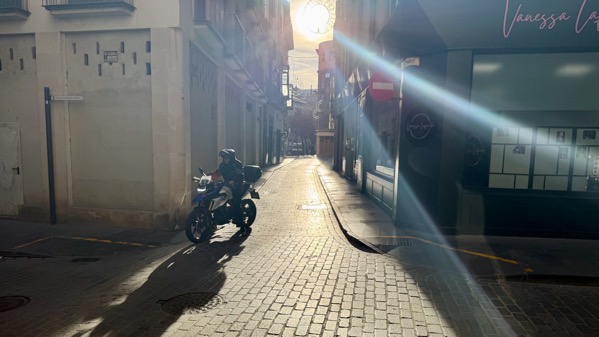
Backlit moto.
Thank you for your patience.
Posted at 2:16 PM |
Comments Off on Roman x 2, more recent religious
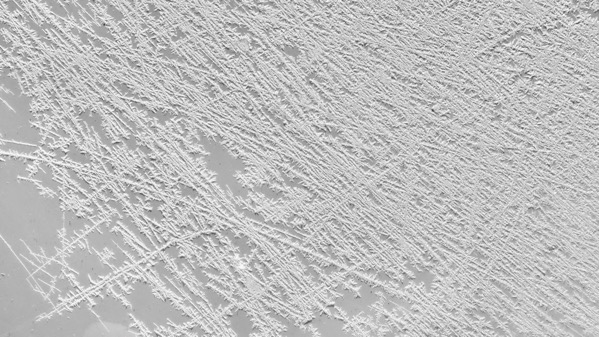
Our hood at 11:15am; car was in the shade all morning. Brr, yet nice in the sun.
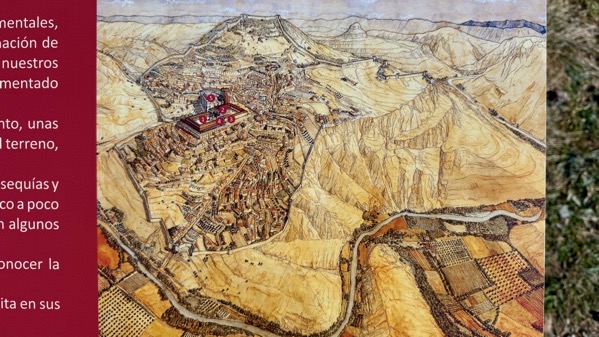
Here’s a stab at the layout of Bilbilis (sometimes with accent), a Roman fortified town on a hilltop and slopes. You can see the city wall clearly in this reconstruction. The forum is the rectangle with the red circle-numbers. It’s close to north-south, with the nose looming over the valley to the south. This location controls a major pass to the east, which today includes the important train route from Madrid to Zaragoza, and was a significant transportation corridor well before the Romans arrived.
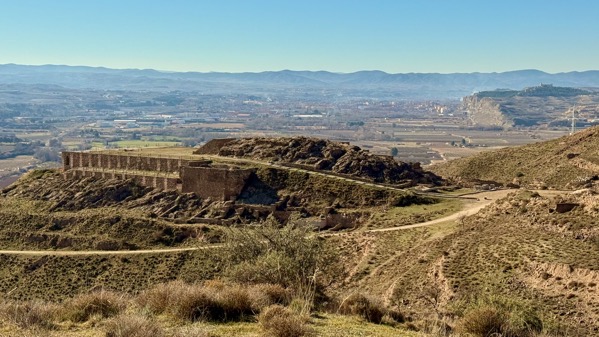
Looking southwest across the forum and into the northeast-ward flowing Jalón River valley.
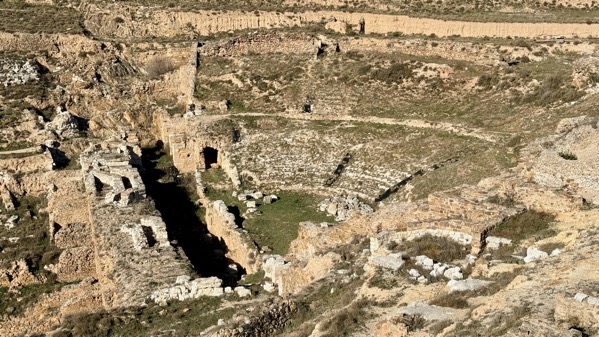
View west from the northwest corner of the forum, down into the amphitheater, which is nested into what would otherwise have been a ravine. A sign indicated there was a previous Roman structure of some sort here.
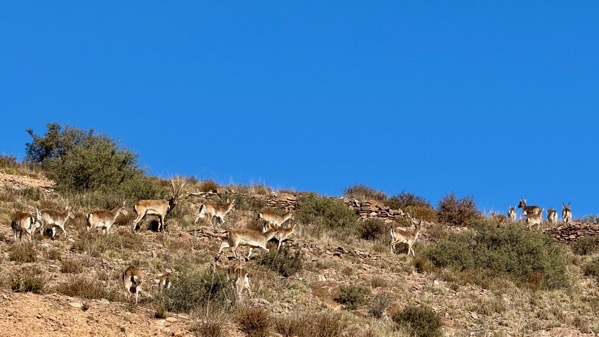
We set off to check out the eastern hill of the settlement, and looked up to see that we were disturbing a herd of grazing Iberian ibex. What a treat. The harem-boss is fourth from the left facing us, perhaps trying to stare us down. He’s got a large set of back-curving horns.
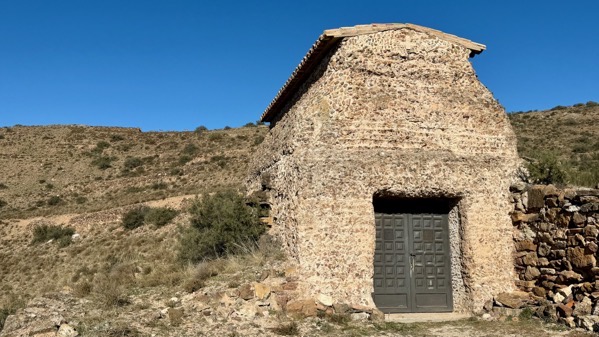
The Romans apparently built this as a cistern, and later Christians repurposed it as a chapel by creating a doorway, and no doubt adding interior features.
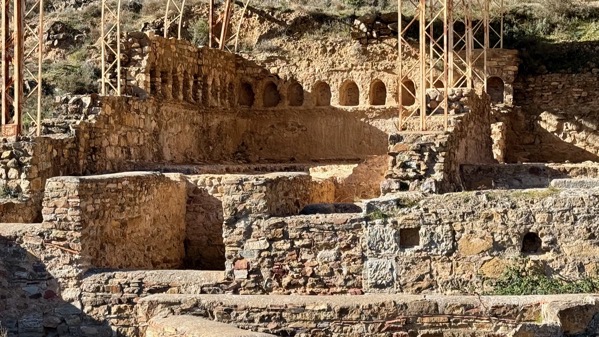
Back in the main part of the site, north-northwest of the forum, is a modest bath complex. This is the only one in this prosperous city—it even had a mint—due to the hilltop locations. The Romans built three cisterns to provide water just for the baths (not only for bathwater, but also for the steam-heat.)
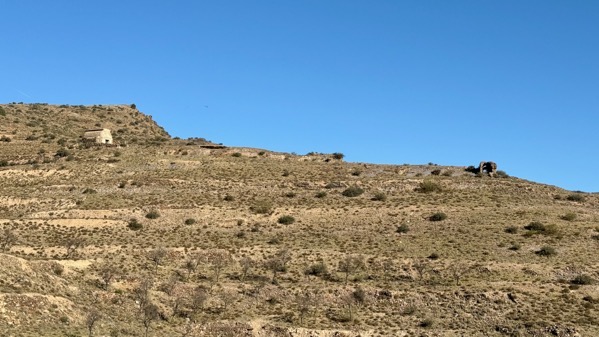
View west of the east hill, with the cistern-church to the left and what looks like another chapel with a round window hole to the right…not discussed on the signs likely because the site managers didn’t want tourists visiting it.

We thoroughly enjoyed our hotel’s restaurant’s prix fixe lunch to recover from our Bilbilis adventure. It included a first and second course, dessert, and a choice of beverages. I chose the ¼ liter of red wine, and was surprised when a whole, full (opened) bottle (a local garnacha) was delivered…I asked, eyes wide I’m sure…she said, just drink two or three glasses, whatever you like, that’ll be fine. Okay! With tax, all of the above for €16. A fine deal! BTW, that’s my dessert, a sorbet of lemon with a few drops of vodka.
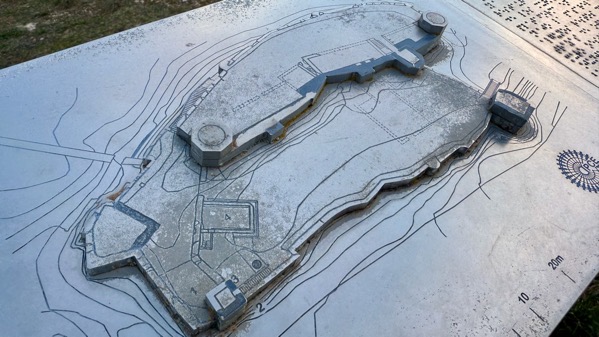
Late in the afternoon fortified from our fine luncheon (and a nap for one of our duo), we drove up to the main castle above Calatayud, formally: Castillo Mayor del Emir Ayyub ibn Aviv Lajmi, named for the official mentioned late in yesterday’s post. It’s a darned narrow castle, as that’s all there’s room for on the sinuous hill. The curved side is facing downhill to the Río Jalón valley.
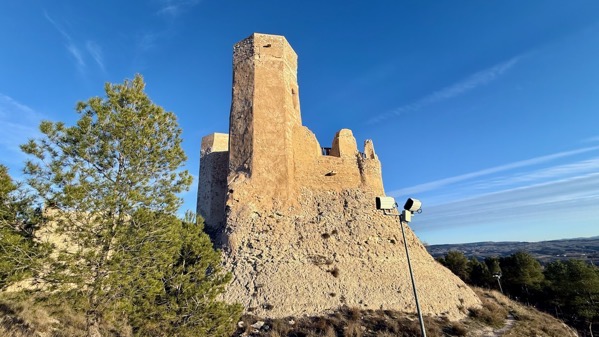
Here’s the west end from dead on. Ignore the nasty lights, far more acceptable before everyone was taking so many photos and instead watching and oooh-ing and aaah-ing at the night-time display.
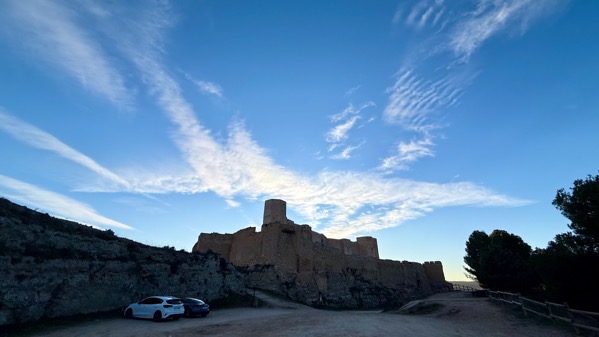
Here’s the view of the east end from the northeast, a massive structure against the sky—and what a sky!
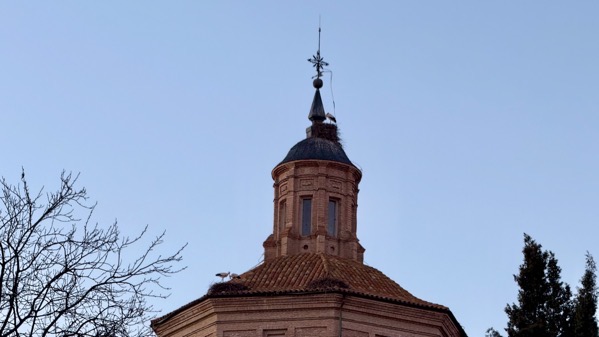
Returning to our hotel for the night, we spotted these storks circling and returning to their nests (two to the lower left; one high, just below the cone). I had to ask the ever-helpful Sandra, the afternoon desk person, what the Spanish is…cigüeña, pronounced something like see-gwain-yuh, very strange spelling for Spanish. Too long for Wordle, fortunately.
Posted at 4:32 PM |
2 Comments »
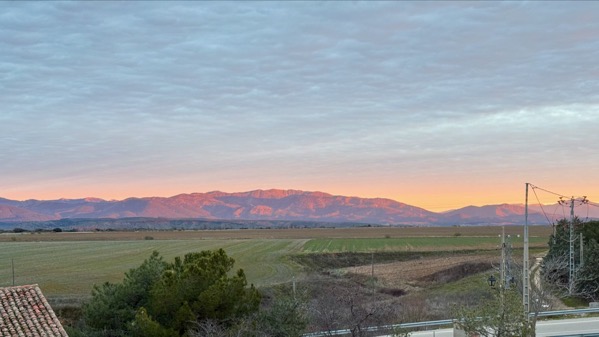
First light from hotel room. The cloud cover soon dissipated.

We exited town by the back way—our first ford…in, amazingly, a Ford!
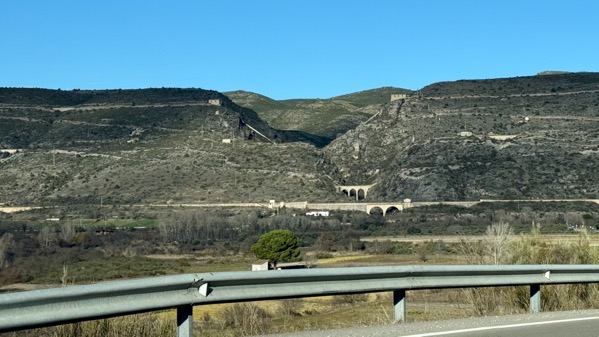
Infrastructure slope! From top to bottom…. Various electrical poles. Major regional irrigation water, in pipes, not open channels. Zigzag of roads on slope. Road bridge of at least three arches. Railroad bridge of two arches. Oh, and guardrail to keep us safe.

“I can see Madrid from “my” dead olive tree!” [Hint: tall buildings are visible just to the left of the tree, on the horizon.]
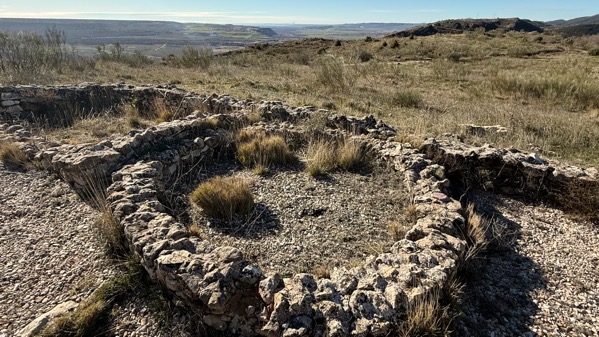
I can also see Madrid over this Medieval well with stabilized walls.
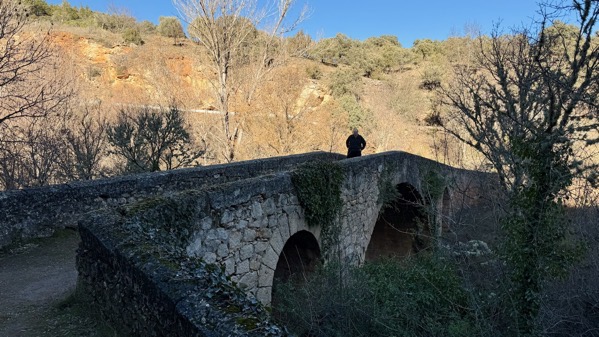
I can see my spouse atop a Medieval bridge!
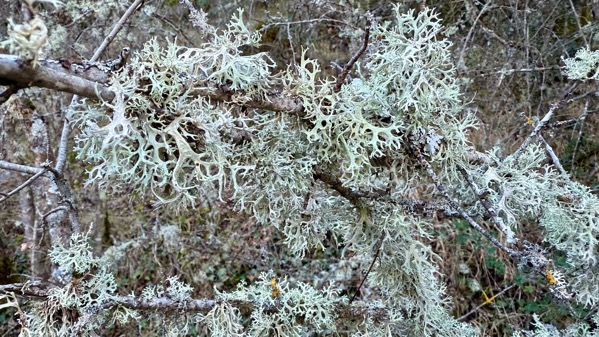
The shady side of this gorge, where I stood to take the above photo, is so shady, the lichens were this prolific.

On the opposite side, the sunlight means happy mosses, with other types of lichen.
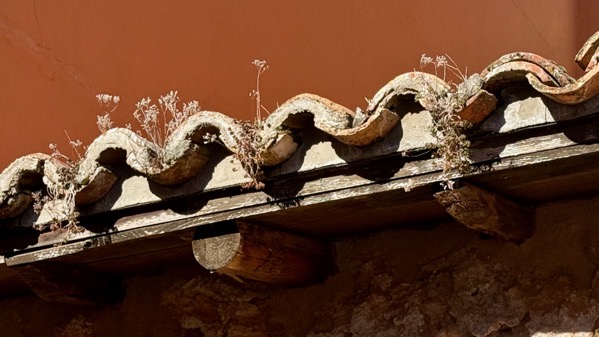
One of my favorite compositions of the day.

We drove up to a famous Late Paleolithic site (and museum) with Acheulean-style tools, with and many animal bone fossils and no hominid remains. We were welcomed first by this beast, two cats on the porch of the museum, and no one to allow us in. Oh, well. [Truth: we did know it would be closed by the time we arrived.]

There’s a day-moon from our last mile, and we’re at our hotel for the night. It’s only a little over an hour before the restaurant opens for dinner service. We worked up an appetite!
Posted at 1:38 PM |
Comments Off on Not in Kansas
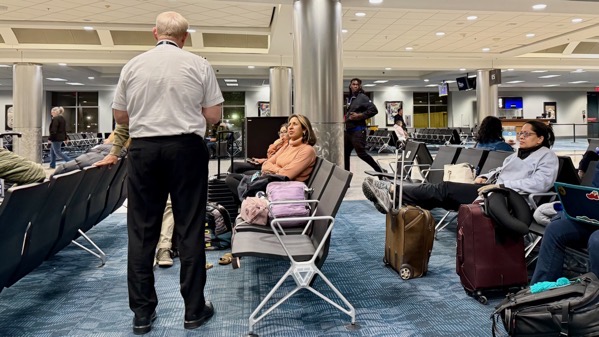
First time a pilot came out to apologize for a late flight—he did it twice, over the mic to all, then walked around and took questions. [Really: last night, but first part of flight in essence.]

First high-elevation corporate witticism I had to “share.” [We left about three hours late; our destination: Madrid.]
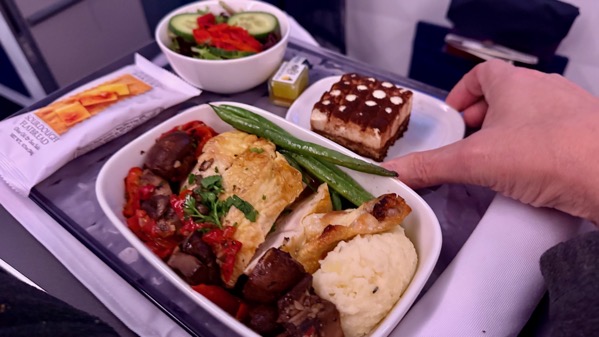
Best airline food I’ve ever eaten. Yum. Truly.
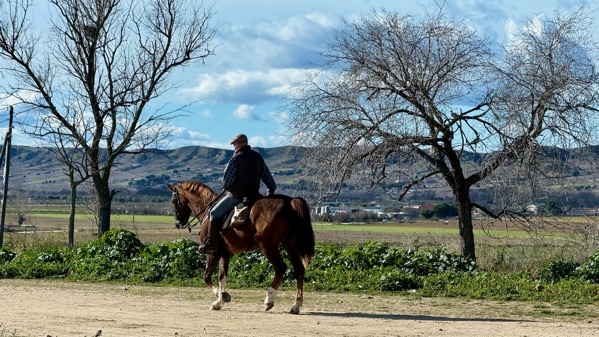
We took off in the rental car, headed north, and the first time we hit a dirt road we saw our first caballero.
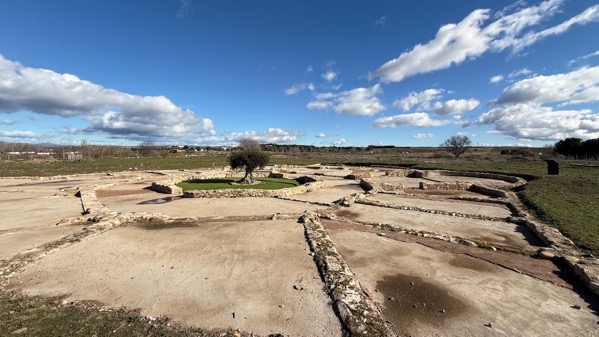
First Roman villa. This is a late one, and the central courtyard-garden still sports a tree.
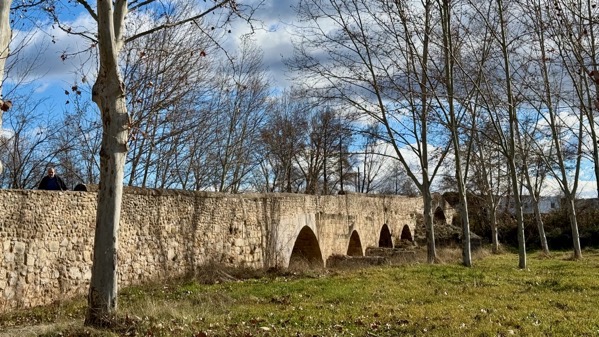
First five-arch Medieval bridge. Last modified in 1973.
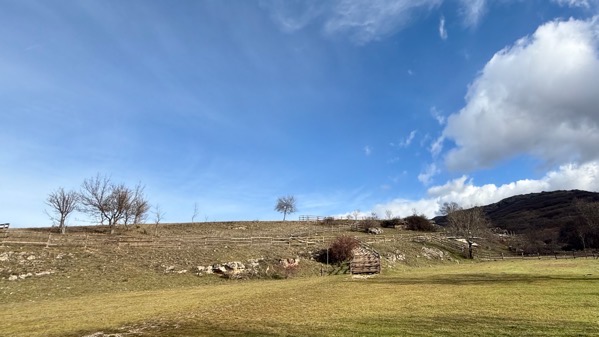
First Neanderthal cave cluster (mostly protected from the elements with a roof or with small openings—fenced, so we couldn’t get closer).
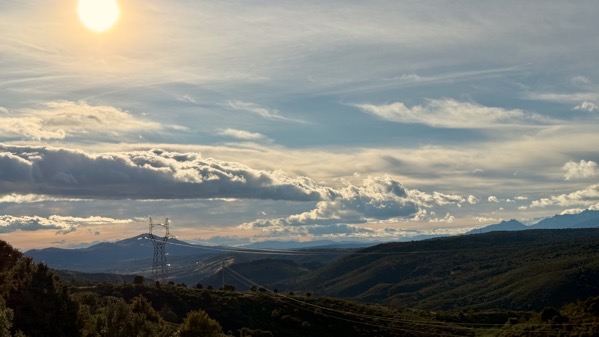
First fabulous sky of the trip.
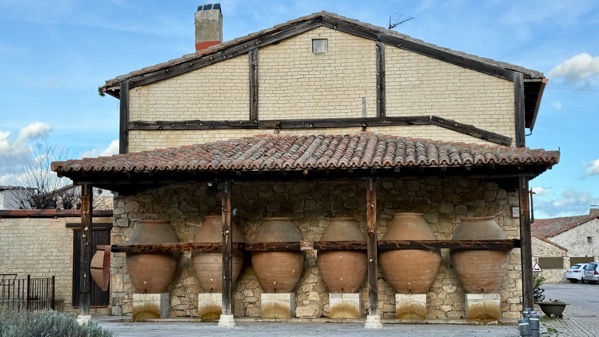
First mystery. Sign says the water isn’t potable.
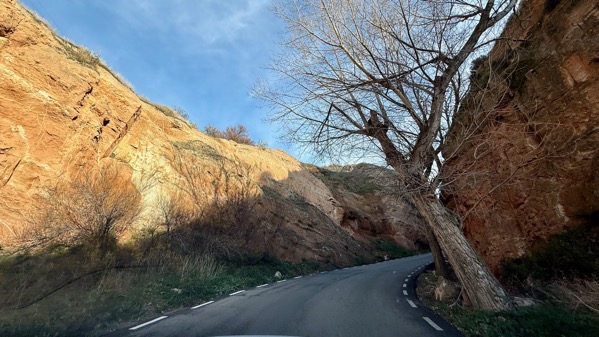
First dramatic bottleneck/pass we’ve driven through.

First night’s hotel room view.
We’re getting into the swing of the Spanish lifestyle: we will dine tonight at 8:30; only two more hours to wait. Over and out.
Posted at 12:28 PM |
2 Comments »

At BookClub, we always talk about more than The Book. This time, we also went out to check our hostess’s new patio upgrade (already had the waterfall; the fireplace is new), and furthermore did a bit of star-gazing (not shown—heh).
Posted at 10:01 PM |
Comments Off on Extras



























































































































